Shaker Music History

From Manchester to Watervliet
In 1747 under the leadership of James and Jane Wardley in Bolton, England, a small group was formed.
One of their members was Ann Lee (or Lees) of Manchester who joined them in 1758. From her deep spirituality and convictions, she became the head of this small group who by their movements of hands and body became known as Shakers or Shaking Quakers. Mother Ann was uneducated but because of her charismatic speaking, teaching and singing, she was revered by the later Shakers in the 19th, 20th and today by the few Shakers living
at Sabbathday Lake, Maine, their last remaining community.
Mother Ann Lee was born at Toad Lane (now Todd Street) in Manchester, England, on 29 February 1736.
She died at Watervliet, New York on 8 September 1784.
This hymn was one of the many written about her:
"On the Birthday of Mother Ann"
words and tune by Elder James Prescott, North Union, Ohio.
This hymn was first published in The Shaker Messenger magazine in 1982,
edited by Roger Hall.
Here is the first of the six stanzas:
We praise the name of Mother,
We hail the day she's born,
We
all unite together
To celebrate this morn.
We hail the name of Mother
And that eventful day
When she did cross the ocean
To North America (sung as "Amerikay").
250th anniversary of their landing in America
Mother Ann and a small group of her followers including her brother, Father William Lee, landed in New York City
on August 6, 1774.
Their first settlement in New York State was in a place first called Niskayuna (later changed to Watervliet).
Here is a quote about her singing from the well-researched book by Richard Francis,
Ann The Word: The Story of Ann Lee, Female Messiah, Mother of the Shakers, The Woman Clothed With the Sun
(Arcade Publishing, New York, 2001), while she was on a missionary trip at Enfield, Connecticut in 1782:
Mother Ann appeared in front of the crowd, and sounded the gospel trumpet with singing. Her voice very powerful and singing truly melodious.
"On the Landing of Mother Ann in America"
The most important anniversary celebrated each year by the Shakers is the arrival of their spiritual leader, Mother Ann Lee, and a small number of Believers in America. They left Liverpool, England in May and arrived in New York City on
August 6, 1774. This is a very important date because it signifies the beginning of the Shaker Church in America. The event was often celebrated in later years with new songs and hymns. One of these is a hymn titled, "On the Landing of Mother Ann in America," and it has four verses. This is the first verse:
O hail this happy welcome day,
When blessed Mother Ann
First landed in America
With her devoted band.
How did the wilderness resound
With Angel's songs of praise
When they on fair Columbia's ground
The gospel standard raised.
Chorus:
Again let the forest loudly resound,
Dear Children of Mother;
Her beautiful way our Spirits have found,
Surpassing all others.
The hymn was written at North Union (today Shaker Heights, Ohio) just before the outbreak of the Civil War in 1860. The Shaker composer of this hymn is unknown. It was first performed by a community chorus directed by Roger Hall during the Bicentennial Conference of the Shakers Arrival in America at The Western Reserve Historical Society in Cleveland, Ohio in October of 1974.
Both the Shaker hymns about Mother Ann were edited by Shaker music scholar, Roger Hall,
from his extensive research on music of the North Union Shakers which he researched for his Ph.D dissertation.
His research was later published in a book titled,
.jpg)
"May We Ever Be United":
Music of the North Union, Ohio Shakers (PineTree Music)
The 50th anniversary of the Shakers meeting Aaron Copland
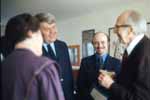
© Photopgrah by Gail M. Hall, 1974
Read about when several Shakers from Sabbathday Lake, Maine
were introduced
to Aaron Copland by Shaker music scholar, Roger Lee Hall.
It was the only time they met.
Read about this meeting in 1974 in this new multimedia collection with over 500 files and 100 audio examples:
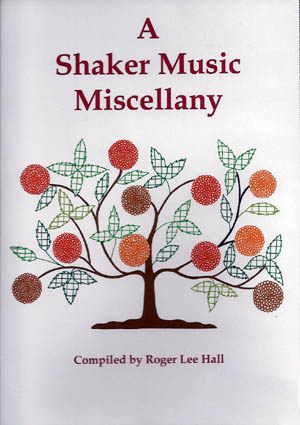
Here is a page from a Shaker music mansucript showing her wordless song and songs from her brother, Father William Lee,
all
from the 1780s
in Shaker alphabet music notation:
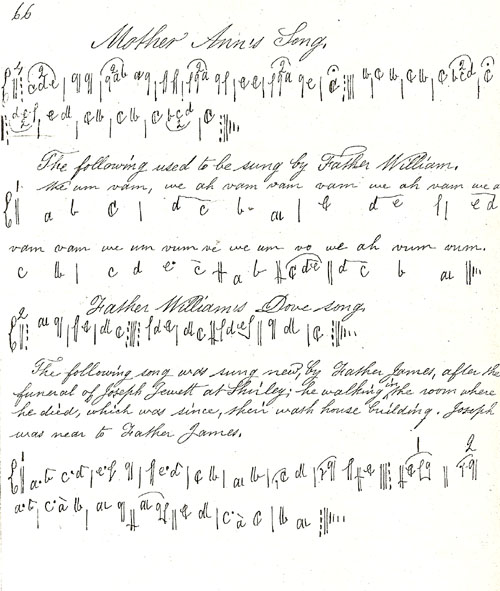
[Courtesy: American Antiquarian Society, Worcester, Massachusetts]
"Mother Ann's Song" is included on this AMRC CD:
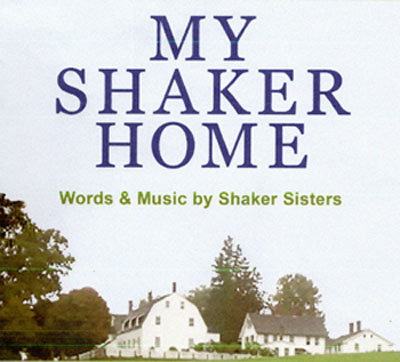
"Mother Ann's Song" is included in conventional music notation on this DVD-ROM:
 sm.jpg)
A False Identification
This picture circulating on the Web claims to be Mother Ann Lee...

That is FALSE.
The picture is NOT Mother Ann Lee since there are no pictures or portaits from her lifetime.
There was a much later portrait which does not come from any Shaker authority or source.
The above picture is of Eldress Anna White (1831-1910) at Mount Lebanon, New York.
Please help correct this
error if you notice it on the web or in print.
An interview with Aaron Copland is included in this PDF book about the best-known Shaker song:
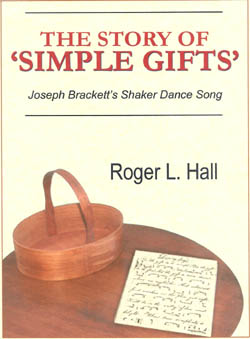
If you are interested in sponsoring a Online webinar or in-person music lecture
about Aaron Copland meeting the Shakers in 1974 and about
the popular Shaker song, "Simple Gifts," write to Mr. Hall
by clicking here

To read about Mr. Hall's 50 year study of Shaker music - click here
Shaker Music: A Brief Introduction
Today the Shakers are known especially for their simple and beautiful furniture and artifacts.
Yet their music played a longer and more important role in Shaker history.
They composed more music than any other religious communal society in the USA -- well over 10,000 songs, hymns and anthems.
Contrary to popular belief, all Shaker folk tunes are not "Traditional" or "Anonymous."
It is also incorrect to classify all Shaker music as "songs."
There were three main categories of Shaker music (each with one example listed):
- one verse songs: "Gentle Words" (Polly M. Rupe, ca. 1867)
- multi-verse hymns: "The Humble Heart" (Words: Eunice Wyeth/ tune: Thomas Hammonmd, ca. 1820)
- through-composed anthems: "Mount Zion" (Issachar Bates, ca. 1815)
Because they were often inspirationally received and revivalistic,
like Afro-American spirituals, they are best classified together as -- Shaker spirituals.
Their early music was single melody only. Around 1830, three-part tunes began to be composed,
and by the 1870s, four part hymns and anthems (S-A-T-B)
were printed in their hymnals.
Many of the spirituals are attributed to individual Shaker brethren or sisters.
The Shakers also composed many songs for dancing during their worship ritual.
Probably the best known of their dancing songs is -- "Simple Gifts" (aka: 'Tis the gift to be simple) by Elder Joseph Brackett in 1848.
Another popular title is the quick dance song, "Come Life, Shaker Life" composed by Issachar Bates about 1835
and shown here in Shaker alphabet music notation:

From a Shaker music manuscript
(Courtesy: Western Reserve Historical Society, Cleveland, Ohio)
